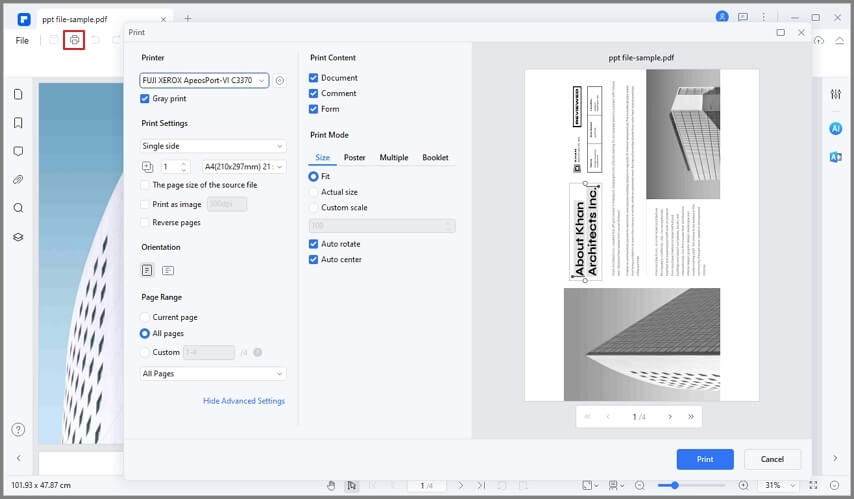
#24 to double pdf pdf#
But you can’t see those differences when you look at the PDF in a reader. For example, a PDF might contain invisible text, graphics, and images.

For example, PDF stores a table as a set of lines without any relationship to the content inside the table cells.ĭifferent programs represent the same content using different structures in PDF files. Most PDFs don’t include information about structural content elements, such as paragraphs, tables, or columns. PDF is a fixed file format, which means the file stores the location of text, pictures, and vector graphics on a page, but not necessarily the relationships among them. If your PDF includes these, you might want to open it directly rather than converting it to a Word document:įont effects, like Glow or Shadow (in the Word file, the effects are represented by graphics) Some elements are known to be problematic when converting from PDF to Word format. Document elements that don’t convert well For example, if Word doesn’t recognize a footnote, it treats the footnote as regular text and might not put it at the bottom of the page. Sometimes, Word doesn’t detect an element, and so the Word version doesn’t match the original PDF file. When that happens, the text can’t be edited. If the PDF contains mostly charts or other graphics, the whole page might show up as an image. But when you open a PDF file in Word, it might not look exactly the way it looked as a PDF. You always have the original PDF file, in case you don't want to keep the version that Word converts.Ĭonverting from PDF to Word works best with files that are mostly text-for example, business, legal, or scientific documents. Word makes a copy of the PDF, converting it to a Word document and attempting to match layout of the original PDF.

However, if you want to edit the PDF file, go ahead and open it in Word. We have also created a cool little tool that will calculate the total Number of Games in a Tournament.To open a PDF file without converting it to a Word document, open the file directly wherever it's stored (for example, double-click the PDF file in your Documents folder). Whoever wins that game would then be the champions. If the team from the Loser's Bracket wins, then game 15(dotted lines) in the above illustration would be played. If the team from the Winner's Bracket wins then they are the champions. Game 14 in the above illustration is the Championship between the Winner of the Winner's Bracket(Zero Losses) and the Winner of the Loser's bracket(1 Loss).


All you have to do is look at the Winner's Bracket to see what game number was played, and the loser of that game would drop down to the corresponding location in the losers bracket.ĭ: The letter "D" represents the Championship game. Simply start by playing the game labeled (1) and continue until all games are completed.Ĭ: The letter "C" points to the position where the loser of each game would move to. If you are printing a blind draw bracket these numbers will not appear on the bracket, but the rest of the bracket will be exactly the same.ī: The letter "B" points to the order in which the games are to be played. The same idea is used for all brackets, not matter what the number of participants are.Ī: The letter "A" points to the "Seeds" of the tournament, if you have pre-ranked your participants based on strength or a season record you would put each team's name on the corresponding line. The bracket above is a 16 Team "Seeded" double elimination bracket. If you are not familiar with running double elimination tournaments, the above illustration and the comments below should help guide you through setting up and running your tournament. We also have printable Single Elimination Brackets and Triple Elimination Brackets available. The two sections above are broken up between "Blind Draw" and "Seeded".
#24 to double pdf free#
The Double Elimination brackets above are free to print.


 0 kommentar(er)
0 kommentar(er)
